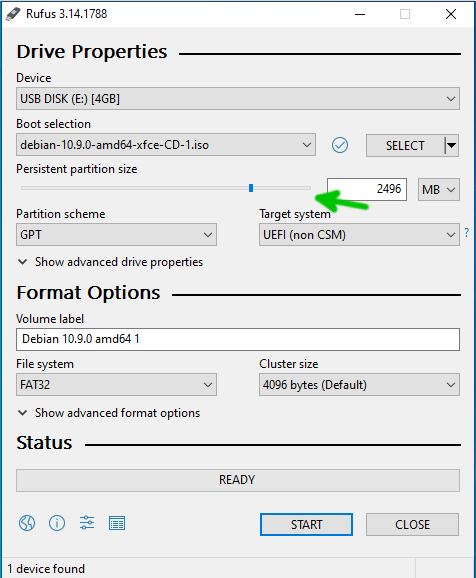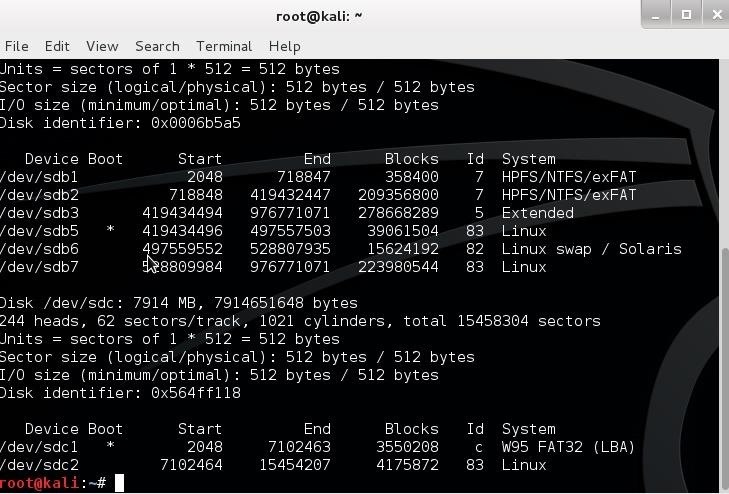

- #Install linux on usb for persistence install#
- #Install linux on usb for persistence drivers#
- #Install linux on usb for persistence driver#
- #Install linux on usb for persistence portable#
- #Install linux on usb for persistence iso#
archuseriso - Profiles for building Arch Linux Live ISO images. ArchLinux USB - c-magyar's excellent writeup on creating a persistent Live USB installation. ALMA - A utility written in Rust to automatically create persistent Arch Linux Live USB installations. See Improving performance#The scheduling algorithms for more info. 
For example BFQ can improve UI responsiveness which is default on linux-zen, linux-ck AUR. Improving performance#Changing I/O scheduler or switching to a kernel which uses different default scheduler can drastically effect your UI responsiveness. You might encounter UI freezes on high I/O load especially on slow drives. To disable fsync and related system calls in web browsers and other applications that do not write essential data, use the eatmydata command from libeatmydata to avoid such system calls:.You may want to configure systemd journal to store its journals in RAM, e.g.
#Install linux on usb for persistence portable#
Note that this does not affect installing onto a portable hard drive. For this same reason, it is best to forget the swap partition. Recognize that flash has a limited number of writes, and a journaling file system will take some of these as the journal is updated. The obvious drawback of using a file system with journaling disabled is data loss as a result of an ungraceful dismount.

To sum it up, for flash-based media such as USB flash drives or SD cards, ext4 without a journal should be fine, which can be created with mkfs.ext4 -O "^has_journal" /dev/sdXX.
It is highly recommended to review the Improving performance#Reduce disk reads/writes article prior to selecting a file system. This also reduces the performance impact of slow writes. When installing to a device that offers a limited number of writes before it wears out, such as a USB drive, SD card, or similar, reduce the number of writes to increase the device lifetime. The fallback image should be used for maximum compatibility. If you add nomodeset as a kernel parameter as a preemptive measure you may have to adjust the display resolution manually when using machines with Nvidia video cards. Nouveau in particular needs KMS to determine the correct display resolution. #Install linux on usb for persistence driver#
See the wiki page on your specific driver for details.
#Install linux on usb for persistence drivers#
Warning: Some Xorg drivers will not work with KMS disabled.
#Install linux on usb for persistence install#
If your Arch installation is on a removable drive that needs to have microcode for both manufacturer processors, install both amd-ucode and intel-ucode packages.This would trick operating systems into treating your USB mass storage device as an external hard disk and allow you to use whichever partitioning scheme you choose. Some tools are available online that may allow you to flip the Removable Medium Bit (RMB) on your USB mass storage device. Remember to install dosfstools and ntfs-3g. Note that the data partition may need to be the first partition on the device, as Windows assumes that there can only be one partition on a removable device, and will happily automount an EFI system partition otherwise.
 If you have chosen to install Arch onto a USB mass storage device and want to be able to continue to use it as a cross-platform removable drive, this can be accomplished by creating a partition housing an appropriate file system (most likely NTFS or exFAT). This is necessary to allow booting on multiple systems each requiring different modules in early userspace. Before creating the initial RAM disk, in /etc/nf move the block and keyboard hooks before the autodetect hook. If you run Windows or macOS, download VirtualBox, install VirtualBox Extensions, attach your removable medium to a virtual machine running Linux (either already installed or via a live ISO), and point the installation into the now attached drive while using the instructions at the Installation guide. If booting from a Live USB, the installation cannot be made to the same removable medium you are booting from. An Arch Linux CD/USB can be used to install Arch onto the removable medium, via booting the CD/USB and following the installation guide. If you have another Linux computer available (it need not be Arch), you can follow the instructions at Install from existing Linux. There are various ways of installing Arch on removable media, depending on the operating system you have available: A modest set of packages will fit, leaving a little free space for storage. Note: At least 2 GiB of storage space is recommended.
If you have chosen to install Arch onto a USB mass storage device and want to be able to continue to use it as a cross-platform removable drive, this can be accomplished by creating a partition housing an appropriate file system (most likely NTFS or exFAT). This is necessary to allow booting on multiple systems each requiring different modules in early userspace. Before creating the initial RAM disk, in /etc/nf move the block and keyboard hooks before the autodetect hook. If you run Windows or macOS, download VirtualBox, install VirtualBox Extensions, attach your removable medium to a virtual machine running Linux (either already installed or via a live ISO), and point the installation into the now attached drive while using the instructions at the Installation guide. If booting from a Live USB, the installation cannot be made to the same removable medium you are booting from. An Arch Linux CD/USB can be used to install Arch onto the removable medium, via booting the CD/USB and following the installation guide. If you have another Linux computer available (it need not be Arch), you can follow the instructions at Install from existing Linux. There are various ways of installing Arch on removable media, depending on the operating system you have available: A modest set of packages will fit, leaving a little free space for storage. Note: At least 2 GiB of storage space is recommended.








 0 kommentar(er)
0 kommentar(er)
